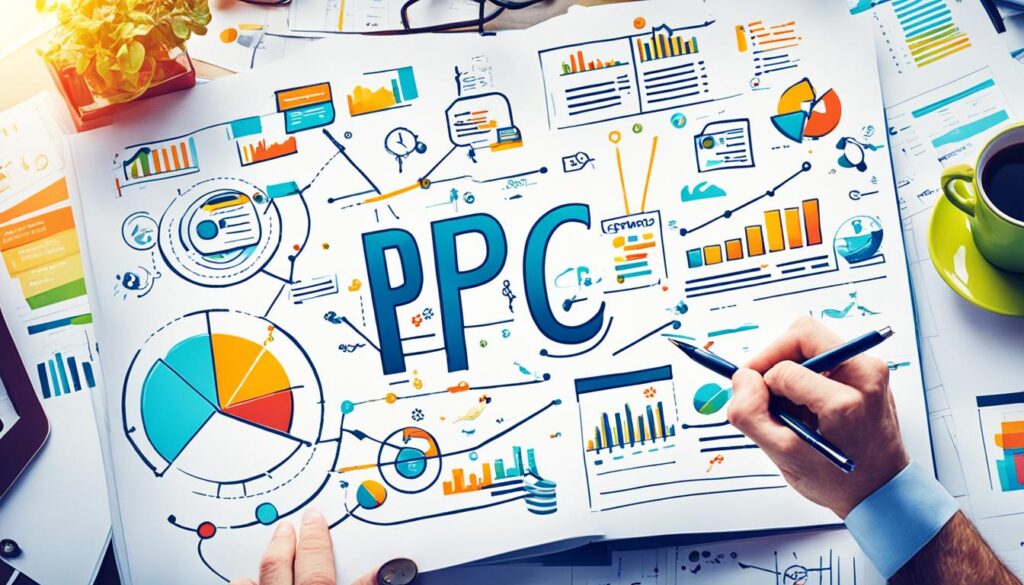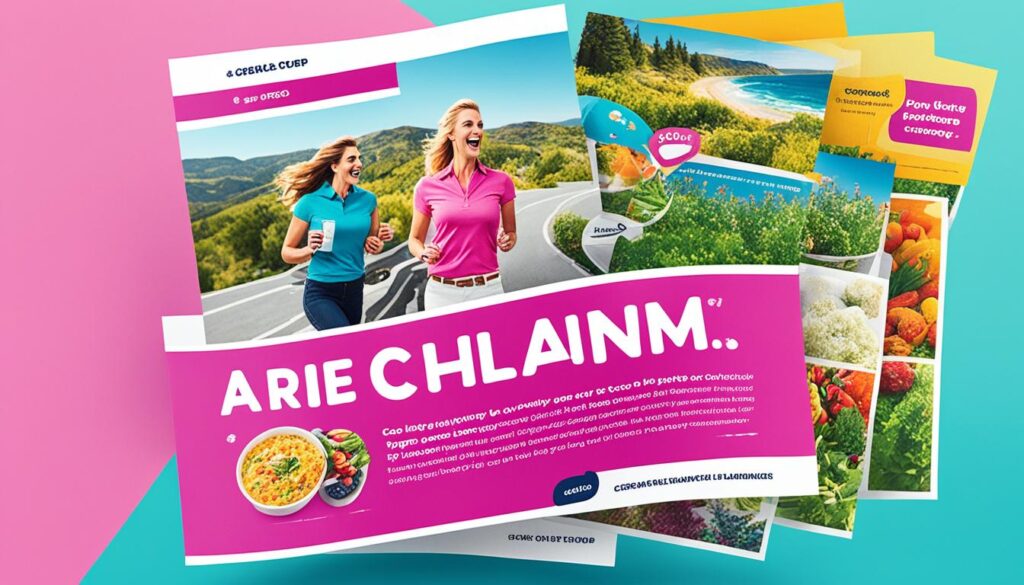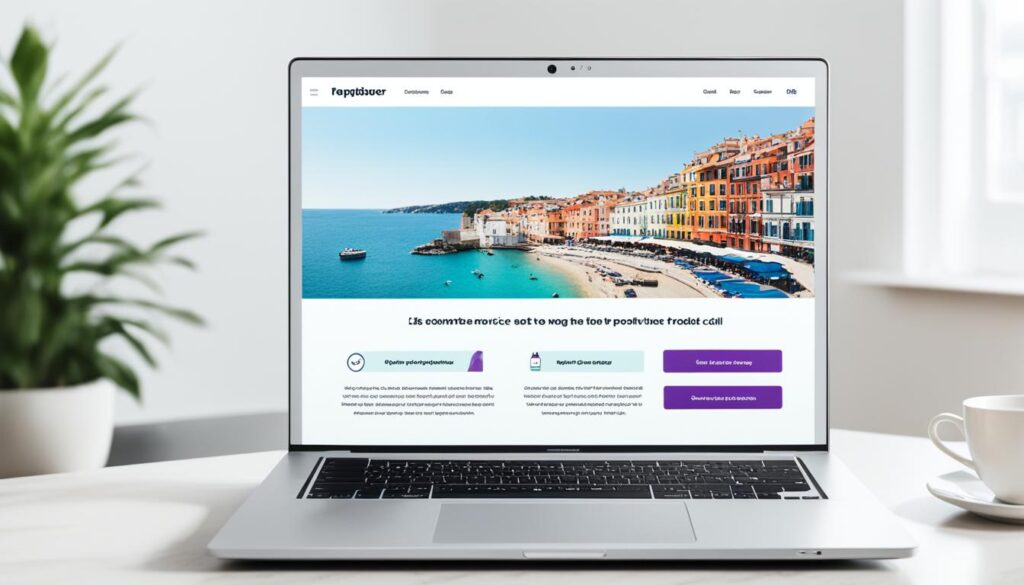PPC Advertising for Beginners
Hey there, fellow digital marketer! If you’re new to the world of online advertising, let me tell you, you’re in for an exciting ride. PPC advertising, also known as pay-per-click advertising, is a game-changer when it comes to driving targeted traffic to your website and boosting your brand’s visibility.
Picture this: It’s 2024, and the digital landscape is evolving at a rapid pace. In this competitive era, PPC advertising has become an essential tool for businesses of all sizes to reach their target audience effectively. Whether you’re a small startup or an established enterprise, mastering PPC advertising is crucial to stay ahead of the game.
But here’s the thing – diving into the world of PPC can be overwhelming, especially if you’re a beginner. Choosing the right platforms, setting up campaigns, understanding the terminology – it can feel like you’re learning a whole new language. That’s why I’m here to guide you through the process and help you kickstart your PPC journey.
Together, we’ll unravel the mysteries of PPC advertising and equip you with the knowledge and strategies you need to create successful campaigns. From choosing the right advertising platform to crafting compelling ad copy and optimizing your landing pages, we’ll cover it all.
<!—->
So, hop on board, my friend. Let’s embark on this thrilling adventure into the world of PPC advertising, where the possibilities are endless, and your brand’s success awaits.
Key Takeaways:
- PPC advertising is a powerful tool for driving targeted traffic to your website.
- Mastering PPC advertising is crucial in the rapidly evolving digital landscape of 2024.
- Getting started with PPC can be overwhelming, but we’re here to guide you.
- Together, we’ll explore the ins and outs of PPC advertising, from choosing the right platforms to optimizing your campaigns.
- So, buckle up and get ready to take your brand’s online presence to new heights with PPC advertising!
Understanding the Basics of PPC
In this section, we will delve deeper into the fundamentals of PPC advertising. We will cover what pay-per-click advertising is, its benefits for digital marketing, and key PPC terminology that you should know.
What is Pay-Per-Click Advertising?
Pay-per-click advertising, commonly known as PPC, is a digital marketing strategy where advertisers pay a fee each time their ads are clicked. It is a way of buying website visits rather than earning them organically. Search engine advertising, such as Google AdWords, is one of the most popular forms of PPC.
Benefits of PPC for Digital Marketing
PPC offers numerous benefits for digital marketing:
- Increased Visibility: PPC allows you to appear at the top of search engine results pages, increasing your brand’s visibility and driving targeted traffic to your website.
- Targeted Audience Reach: With PPC, you have the ability to target specific keywords, demographics, locations, and interests, ensuring that your ads reach your desired audience.
- Measurable Results: PPC provides detailed data and analytics, allowing you to measure the performance of your campaigns and make data-driven optimizations to maximize your ROI.
Key PPC Terminology You Should Know
Understanding key PPC terminology is essential to navigate the world of PPC advertising:
| Term | Description |
|---|---|
| Impressions | The number of times an ad is shown to users. |
| Clicks | The number of times users click on an ad to visit a website. |
| Conversions | Actions taken by users, such as making a purchase or filling out a form, after clicking on an ad. |
| Quality Score | A measure of the relevance and quality of ads, keywords, and landing pages. Higher quality scores can lead to lower costs and better ad positions. |
| Ad Rank | The position of an ad on a search engine results page. Ad rank is determined by the quality score and bid amount. |
By familiarizing yourself with these terms, you will be able to track and optimize the performance of your PPC campaigns effectively.
Setting Up Your First PPC Campaign
In this section, you will learn how to set up your first PPC campaign. Follow the steps below to get started on your advertising journey.
Choosing the Right Advertising Platform
Before setting up your PPC campaign, it’s essential to choose the right advertising platform. Consider platforms like Google Ads, Facebook Ads, or Bing Ads, depending on your target audience and business goals. Research different platforms to understand their features, reach, and targeting options. Select a platform that aligns with your target audience and offers the best opportunities for your business.
Defining Your PPC Campaign Goals
Clearly defining your PPC campaign goals is crucial for a successful campaign. Determine what you want to achieve with your PPC ads. Do you want to increase website traffic, generate leads, or boost conversions? By setting specific, measurable, achievable, relevant, and time-bound (SMART) goals, you can track the progress and effectiveness of your campaign.
Allocating Your Budget Effectively
Budget allocation plays a significant role in the success of your PPC campaign. Determine your overall advertising budget and allocate it strategically across your campaign. Consider factors such as keyword competition, industry benchmarks, and your campaign goals. Ensure that you allocate sufficient budget to each campaign element, including keyword bidding, ad spend, landing page optimization, and ongoing campaign management.
Follow these steps to set up your PPC campaign successfully. Remember to regularly monitor and optimize your campaign for optimal results.
Welcome email best practices for small businesses

Essential Elements of a Successful Ad Campaign
When it comes to running successful ad campaigns, there are several key elements that you cannot afford to overlook. These elements work together to capture the attention of your target audience, drive conversions, and achieve your campaign objectives. Let’s explore the essential elements that make up a winning ad campaign.
1. Compelling Ad Copy
Your ad copy is the heart and soul of your campaign. It should be persuasive, engaging, and compel users to take action. Use attention-grabbing headlines and concise, impactful messaging to deliver your brand’s value proposition effectively. Make sure to highlight the unique selling points of your product or service and create a sense of urgency to encourage immediate action.
2. Relevant Keywords
Keywords play a vital role in reaching the right audience. Conduct thorough keyword research to identify the terms and phrases your target customers are searching for. Incorporate these keywords strategically into your ad copy and landing pages to improve relevancy and increase your ad’s visibility to the right audience.
3. Effective Landing Pages
Your landing page is where the magic happens. It should be optimized for conversions, providing a seamless user experience from click to conversion. Create landing pages that align with your ad copy and deliver on the promises made in your ads. Ensure that your landing pages load quickly, have a clear call to action, and provide relevant, valuable information to visitors.
4. Strong Calls to Action (CTAs)
Your call to action is the final push that encourages users to take the desired action, whether it’s making a purchase, signing up for a newsletter, or contacting your business. Use strong and compelling CTAs that clearly convey what action you want users to take. Incorporate CTAs that create a sense of urgency, such as “Limited Time Offer” or “Get Yours Today!”
By incorporating these essential elements into your ad campaign, you can significantly increase your chances of success. Remember to continually monitor and optimize your campaign based on data insights to ensure ongoing success.

How to Conduct Keyword Research for PPC
When it comes to running successful PPC campaigns, keyword research is a critical step that can make or break your efforts. Understanding the relevance of keywords and how to use them effectively is key to reaching your target audience and maximizing your campaign’s performance.
Understanding Keyword Relevance and Use
Keyword relevance is the foundation of a successful PPC campaign. By choosing keywords that align with your target audience’s search intent, you can increase the chances of your ads appearing in front of the right people at the right time. Focus on selecting keywords that are relevant to your products, services, and industry.
Additionally, consider the match types for your keywords. Broad match allows your ads to be shown for a wide range of related searches, while exact match restricts visibility to only those queries that match your selected keywords precisely. Understanding match types can help you fine-tune your targeting and reach users with higher purchase intent.
Tools for Finding the Right Keywords
Keyword research tools are invaluable resources for finding the right keywords for your PPC campaigns. These tools provide valuable insights into search volumes, keyword competition, and related terms, helping you uncover hidden opportunities and optimize your targeting strategy.
Some popular keyword research tools include:
- Google Keyword Planner: This free tool from Google Ads provides keyword ideas and search volume data based on actual search queries.
- SEMrush: Offering a comprehensive suite of SEO and PPC tools, SEMrush helps you discover profitable keywords, analyze competitors, and track keyword performance.
- Ahrefs: Known for its robust backlink analysis capabilities, Ahrefs also offers a keyword explorer tool that provides insights into keyword difficulty, search volume, and more.
- KeywordTool.io: This tool generates keyword ideas from sources like Google Autocomplete, helping you identify long-tail keywords and untapped opportunities.
Utilizing these tools can streamline your keyword research process, save time, and ensure that you’re targeting the most relevant and valuable keywords for your PPC campaigns.
How to increase email open rates
Utilizing Negative Keywords to Refine Targeting
Negative keywords are an essential component of PPC campaign optimization. These are keywords or terms that you specify to exclude from triggering your ads. By adding negative keywords, you can refine your targeting and exclude irrelevant searches, reducing wasted ad spend and improving campaign performance.
For example, if you sell luxury watches and want to avoid appearing in searches for cheap or counterfeit watches, you can add “cheap” and “replica” as negative keywords. This ensures that your ads are shown to users who are more likely to be interested in purchasing your luxury watches.
Use your keyword research insights to identify potential negative keywords that may not align with your target audience’s search intent or are unrelated to your products or services. Regularly reviewing and refining your list of negative keywords is crucial to maintaining the effectiveness of your PPC campaigns.

| Benefits of Keyword Research for PPC Campaigns | Tools for Keyword Research | How to Utilize Negative Keywords |
|---|---|---|
| 1. Improved targeting and relevance to the target audience | 1. Google Keyword Planner | 1. Identify irrelevant or unrelated keywords |
| 2. Enhanced campaign performance and ROI | 2. SEMrush | 2. Add negative keywords to exclude irrelevant searches |
| 3. Cost-effective advertising by reducing wasted ad spend | 3. Ahrefs | 3. Regularly review and refine the list of negative keywords |
| 4. Uncovering untapped keyword opportunities | 4. KeywordTool.io |
Conducting thorough keyword research, utilizing relevant tools, and implementing negative keywords are crucial steps in optimizing your PPC campaigns. By understanding keyword relevance, finding the right keywords, and refining your targeting, you can improve your campaign’s performance and maximize your return on investment.
Creating Compelling PPC Ad Copy
To ensure the success of your PPC campaigns, it’s crucial to create compelling ad copy that grabs the attention of your target audience. Well-crafted ad copy can make all the difference in attracting potential customers and driving conversions. In this section, we’ll explore some key strategies for writing effective PPC ad copy, including attention-grabbing headlines, clear and concise messaging, and compelling calls to action.
Writing Headlines That Capture Attention
Your ad headline is the first thing that users see when your ad appears in search results, so it’s essential to make it attention-grabbing and compelling. Here are some tips to help you write headlines that capture attention:
- Be specific: Clearly communicate the value or benefit that users can expect when they click on your ad.
- Use numbers and statistics: Including specific numbers or statistics can create a sense of credibility and urgency.
- Highlight unique selling points: Emphasize what sets your product or service apart from competitors.
By crafting headlines that pique curiosity and offer value, you can increase the likelihood of users clicking on your ads.
The Importance of Clear and Concise Messaging
When it comes to PPC ad copy, less is often more. In the limited space available, it’s important to convey your message clearly and concisely. Avoid using jargon or overly complex language that may confuse or deter users. Instead, focus on delivering a clear value proposition and highlighting the key benefits of your product or service. Use bullet points or short sentences to make your ad copy scannable and easy to read.
Including Effective Calls to Action (CTAs)
A strong call to action (CTA) is essential for encouraging users to take the desired action, whether it’s making a purchase, signing up for a newsletter, or requesting a quote. Here are some tips for creating effective CTAs:
- Use action-oriented language: Encourage users to take immediate action by using verbs like “buy,” “sign up,” or “request.”
- Create a sense of urgency: Use words like “limited time offer” or “exclusive deal” to encourage users to act quickly.
- Provide incentives: Offer discounts, free trials, or other incentives to entice users to take action.
By including a compelling CTA in your ad copy, you can motivate users to click on your ad and convert into customers.
Creating compelling PPC ad copy requires a combination of creativity, understanding your target audience, and aligning your messaging with their needs and motivations. By following these strategies for writing attention-grabbing headlines, clear messaging, and effective CTAs, you can enhance the performance of your PPC campaigns and drive measurable results.

Designing Landing Pages That Convert
In order to maximize the effectiveness of your PPC advertising campaigns, it’s crucial to design landing pages that have high conversion rates. Below, we’ll explore the key elements that contribute to creating landing pages that convert, as well as strategies for optimizing their layout and content to engage your target audience.
Elements of High-Converting Landing Pages
When designing your landing pages, it’s essential to include the following elements:
- Clear value propositions: Clearly communicate the unique benefits and value that your product or service offers.
- Compelling imagery: Use visually appealing and relevant images or videos to capture visitors’ attention.
- Intuitive navigation: Ensure that visitors can easily navigate through your landing page and find the information they need.
- Strong calls to action: Use persuasive and action-oriented language to encourage visitors to take the desired action, such as making a purchase or submitting a form.
Optimizing Page Layout and Content for Your Audience
Understanding your target audience is crucial when optimizing your landing page layout and content. Consider the following strategies:
- Keep it simple: Avoid cluttered design and focus on a clean and organized layout that guides visitors’ attention to the most important elements.
- Use persuasive copy: Craft compelling and benefit-driven copy that appeals to your target audience’s needs and desires.
- Highlight credibility: Include customer testimonials, trust badges, or case studies to establish trust and credibility.
Remember to continually test and iterate on your landing page design to find the optimal combination of elements that resonates with your audience and drives conversions.
Tracking and Testing Landing Page Performance
Tracking and testing the performance of your landing pages is essential for continuous improvement. By analyzing data and metrics, you can identify areas for optimization and make data-driven decisions. It’s recommended to:
- Set up tracking tools: Utilize tools like Google Analytics to track conversions, bounce rates, and other relevant metrics.
- Implement A/B testing: Test different variations of your landing page to determine which elements drive higher conversion rates.
- Analyze user behavior: Examine user engagement data to identify areas where visitors may be dropping off or experiencing difficulties.
By consistently monitoring and testing your landing page performance, you can make informed adjustments that optimize conversions and improve your PPC advertising ROI.
Start earning effortlessly! Claim your $3 bonus and monetize your unused data with Honeygain. It’s simple, secure, and smart.
Claim Nowand watch your balance grow! 🍯💸

Navigating PPC Bidding Strategies
When it comes to PPC advertising, bidding strategies play a crucial role in optimizing your campaigns and achieving your desired results. By understanding the different bidding options available and implementing effective optimization techniques, you can maximize the performance of your PPC ads and minimize unnecessary costs.
One of the key concepts you need to grasp is cost per click (CPC), which is the amount you are willing to pay for each click on your ad. This bid amount can be adjusted based on factors like keyword competitiveness, target audience, and campaign goals. Effective bidding optimization requires finding the right balance between maximizing visibility and controlling costs.
To navigate the world of PPC bidding effectively, consider leveraging bid adjustments and bid modifiers to fine-tune your campaign performance. Bid adjustments allow you to increase or decrease your bids based on factors such as device type, location, time of day, or audience demographics. This helps you optimize your bids to reach the most valuable segments of your target audience and maximize your return on investment (ROI).
Automated bidding options can also be valuable tools in your PPC arsenal. These advanced bidding strategies utilize machine learning algorithms to automatically adjust your bids based on performance data. By letting the system optimize your bids in real-time, you can save time and effort while maximizing the efficiency of your campaigns.
When navigating PPC bidding strategies, it’s essential to regularly monitor and analyze your campaign performance data. Keep an eye on your key metrics, such as click-through rates (CTR), conversion rates, and cost per conversion, to identify areas for improvement and make data-driven decisions.
“Effective bidding optimization requires finding the right balance between maximizing visibility and controlling costs.”
By understanding the nuances of PPC bidding strategies and applying best practices, you can take your campaigns to the next level and achieve optimal results. Let’s explore the various bidding strategies and techniques in the table below:
| Bidding Strategy | Description |
|---|---|
| Manual Bidding | Set your own bids manually for greater control over budget allocation and bid adjustments. |
| Enhanced CPC | Allows the search engine to adjust your bids automatically for clicks deemed more likely to result in conversions. |
| Target CPA | Set a target cost per acquisition (CPA) that you are willing to pay, and allow the system to adjust bids accordingly to achieve that target. |
| Maximize Conversions | Allocate your budget to maximize the number of conversions rather than adhering to a specific cost per conversion target. |
| Target ROAS | Set a target return on ad spend (ROAS) to maximize revenue, and let the system adjust bids to achieve that target. |
Remember, success in PPC bidding strategies relies on continuous monitoring, testing, and optimization. Stay attuned to market trends, experiment with different bidding options, and adapt your strategies based on performance data to drive maximum results from your PPC campaigns.

Tracking and Analyzing PPC Campaign Performance
In order to ensure the success of your PPC campaigns, it’s crucial to track and analyze their performance. By monitoring key metrics and making data-driven adjustments, you can optimize your campaigns and achieve the best possible results. In this section, we’ll guide you through the process of tracking PPC campaign performance and utilizing Google Analytics for accurate data analysis.
Setting Up Google Analytics for PPC Tracking
Google Analytics is a powerful tool that enables you to gain valuable insights into the performance of your PPC campaigns. To set up Google Analytics for PPC tracking, follow these steps:
- Sign in to your Google Analytics account or create a new one if you don’t have an account.
- Go to the Admin section and select the desired property.
- Under the Property column, click on “Tracking Info” and then “Tracking Code”.
- Copy the tracking code snippet provided.
- Paste the tracking code snippet into the head section of your website or landing page.
- Save the changes and wait for Google Analytics to start collecting data.
Once Google Analytics is set up, you’ll be able to track important metrics such as clicks, impressions, conversions, bounce rate, and more. This data will help you gain insights into the effectiveness of your campaigns and make informed decisions for optimization.
Key Metrics to Measure Your Campaign’s Success
When tracking the performance of your PPC campaigns, it’s important to focus on key metrics that indicate their success. Here are some essential metrics to measure:
- Click-Through Rate (CTR): The percentage of people who click on your ads after seeing them. A high CTR indicates that your ads are engaging and relevant to your target audience.
- Conversion Rate: The percentage of visitors who complete a desired action, such as making a purchase or filling out a form. A high conversion rate indicates that your ads are driving valuable actions.
- Cost-Per-Conversion (CPC): The average amount you’re paying for each conversion. Monitoring your CPC can help you optimize your budget and maximize your return on investment.
- Quality Score: A metric used by ad platforms to assess the quality and relevance of your ads and landing pages. A higher quality score can lead to lower costs and better ad positions.
By regularly monitoring these metrics, you can identify areas for improvement and make data-driven adjustments to your campaigns.
Adjusting PPC Campaigns Based on Data Insights
Once you’ve tracked and analyzed the performance of your PPC campaigns, it’s time to make data-driven adjustments to optimize their effectiveness. Here are some strategies for adjusting your campaigns based on data insights:
- Identify underperforming keywords and either remove them or adjust your bidding strategy.
- Review your ad copy and make updates to improve click-through rates and conversions.
- Optimize your landing pages to improve user experience and increase conversions.
- Explore different targeting options, such as geographic targeting or audience targeting, to reach a more relevant audience.
- Allocate your budget based on the performance of different campaigns or ad groups.
By using data-driven insights to make adjustments to your PPC campaigns, you can continuously optimize their performance and achieve the best possible results.
Tracking and Analyzing PPC Campaign Performance
![]()
| Metric | Description |
|---|---|
| Click-Through Rate (CTR) | The percentage of people who click on your ads after seeing them. |
| Conversion Rate | The percentage of visitors who complete a desired action on your website. |
| Cost-Per-Conversion (CPC) | The average amount you’re paying for each conversion. |
| Quality Score | A metric used to assess the quality and relevance of your ads and landing pages. |
PPC Advertising for Beginners
Managing Your First PPC Campaign
Now that you have set up your first PPC campaign, it’s important to manage it effectively to achieve your desired results. Managing a PPC campaign involves continuous monitoring, optimization, and strategic decision-making. Here are some best practices to help you successfully manage your first PPC campaign:
- Regularly review your campaign performance: Keep a close eye on key metrics such as click-through rate (CTR), conversion rate, and cost per click (CPC) to evaluate the effectiveness of your ads and make necessary adjustments.
- Optimize your ad copy: Test different variations of ad headlines, descriptions, and calls to action to find what resonates best with your target audience. By continuously optimizing your ad copy, you can improve your campaign’s performance and drive better results.
- Narrow down your keyword targeting: Avoid the common pitfall of targeting broad keywords, as they can result in irrelevant clicks and wasted ad spend. Focus on specific, relevant keywords that align with your campaign goals and target audience.
- Utilize ad scheduling and location targeting: Take advantage of advanced targeting options like ad scheduling and location targeting to reach your audience at the right time and in the right place. This can help you maximize the impact of your ads.
- Monitor your budget: Keep a close watch on your budget to ensure you’re allocating your ad spend effectively. Set daily or monthly limits to maintain control over your campaign costs.
Avoiding Common PPC Pitfalls
As a beginner in PPC advertising, it’s crucial to be aware of common pitfalls and avoid them to maximize the success of your campaigns. Here are some pitfalls to watch out for:
- Targeting irrelevant keywords: It’s important to choose keywords that are highly relevant to your business and target audience. Targeting irrelevant keywords can lead to a low-quality traffic and wasted ad spend.
- Neglecting ad optimization: Regularly optimizing your ad copy and testing different variations is essential for improving performance. Neglecting ad optimization can result in low click-through rates and poor campaign results.
- Overlooking campaign performance data: Data insights are crucial for making informed decisions and optimizing your campaigns. Failing to analyze campaign performance data can lead to missed opportunities and ineffective strategies.
- Ignoring ad rank and quality score: Ad rank and quality score play a significant role in determining the visibility and effectiveness of your ads. Ignoring these metrics can result in low ad positions and decreased campaign performance.
Leveraging Online Resources and Communities
As a beginner in PPC advertising, it’s important to take advantage of online resources and communities to expand your knowledge and stay updated with industry trends. Here are some valuable online resources and communities to explore:
- Google Ads Help Center: The Google Ads Help Center provides comprehensive guides, tutorials, and support for beginners to learn about PPC advertising and navigate the platform effectively.
- Online forums and communities: Joining online forums and communities, such as the Google Ads Community or PPC Hero Forum, allows you to connect with experienced advertisers, ask questions, and gain insights from their expertise.
- Industry blogs and websites: Regularly reading industry blogs and websites, such as Search Engine Journal or WordStream, can provide valuable tips, best practices, and updates on PPC advertising.
- Webinars and online courses: Participating in webinars or enrolling in online courses, such as those offered by Google Skillshop or Udemy, can help deepen your understanding of PPC advertising and enhance your skills.
By leveraging these online resources and communities, you can enhance your PPC knowledge, learn from experienced advertisers, and stay informed about the latest trends and strategies in PPC advertising.

Maximizing ROI with Advanced PPC Tactics
Once you have mastered the basics of PPC advertising, it’s time to take your campaigns to the next level and maximize your return on investment (ROI). By implementing advanced PPC tactics, you can optimize your ad performance, explore different campaign types and ad formats, and effectively target your audience for increased conversions and brand exposure.
Utilizing A/B Testing for Ad Optimization
One of the most effective ways to optimize your PPC ads is through A/B testing. This technique involves creating multiple variations of your ad and testing them against each other to see which performs better. By experimenting with different headlines, ad copy, images, or calls to action, you can identify the elements that resonate the most with your audience and drive higher engagement and conversions.
For example, you can test two different headlines to see which one generates more clicks or experiment with different ad copy to determine the most persuasive messaging. By analyzing the results of your A/B tests, you can make data-driven decisions to optimize your ads and improve their overall performance.
Exploring Different Campaign Types and Ad Formats
In addition to A/B testing, another way to maximize your ROI is by exploring different campaign types and ad formats. Different campaign types, such as search ads, display ads, or video ads, offer unique opportunities to reach your target audience in various online spaces. By diversifying your campaign types, you can expand your reach and generate more leads or sales.
Similarly, experimenting with different ad formats can help you capture your audience’s attention and stand out from your competitors. Whether it’s interactive ads, carousel ads, or shopping ads, each format has its advantages and can be leveraged to engage your audience and drive conversions.
Mastering the Art of Remarketing and Audience Targeting
Remarketing is a powerful tactic that allows you to re-engage with users who have previously interacted with your website or ads. By showing tailored ads to this audience segment, you can remind them of your brand, products, or services and encourage them to convert. Remarketing can significantly increase your ROI by bringing back potential customers who have shown interest in your offerings.
Audience targeting is another essential aspect of advanced PPC tactics. By refining your targeting parameters, such as demographics, interests, or behaviors, you can ensure that your ads are shown to the most relevant audience. This increases the likelihood of engagement and conversions, as you are reaching people who are more likely to be interested in what you have to offer.

| Advanced PPC Tactics | Benefits |
|---|---|
| A/B Testing | Optimize ad performance by testing different variations. |
| Different Campaign Types and Ad Formats | Expand reach and engagement by diversifying campaign strategies. |
| Remarketing | Re-engage with users who have shown interest in your offerings. |
| Audience Targeting | Reach the most relevant audience for higher conversions. |
In conclusion, by utilizing advanced PPC tactics such as A/B testing, exploring different campaign types and ad formats, and mastering the art of remarketing and audience targeting, you can maximize your ROI and achieve better results from your PPC advertising efforts. These tactics allow you to continuously optimize your ads, reach a wider audience, and drive higher conversions, ultimately contributing to the growth and success of your business.
Conclusion
In conclusion, PPC advertising offers tremendous potential for success in the digital marketing landscape. By understanding the basics of PPC, setting up effective campaigns, and utilizing advanced tactics, you can drive targeted traffic to your website, generate leads, and increase your ROI.
To solidify your foundations for PPC success, remember to focus on key elements such as compelling ad copy, relevant keywords, and high-converting landing pages. Continuously track and analyze your campaign performance using tools like Google Analytics to make data-driven adjustments that optimize your results.
As you continue on your PPC journey, it’s important to stay updated on industry trends and embrace the evolving landscape of PPC marketing. Keep exploring different campaign types, ad formats, and audience targeting strategies to reach and engage your target audience effectively. By staying adaptable and continuously learning, you can grow your PPC expertise and drive even greater results in the future.
In summary, PPC advertising holds great potential for beginners and seasoned marketers alike. By following the steps outlined in this guide and embracing the ever-changing PPC landscape, you can propel your digital marketing efforts to new heights. So, what are you waiting for? Dive into the world of PPC advertising and unlock the power of targeted online advertising.

